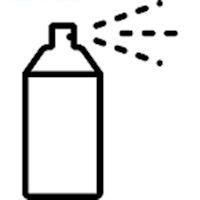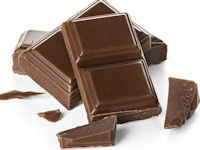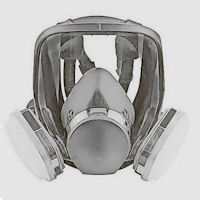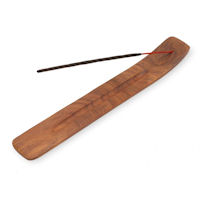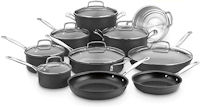Toxins
This seems to be a topic few people consider when keeping birds or reading up on their pet birds, but I am here to tell you how important this topic really is. It does not matter if you keep birds indoors or outdoors, the risks are the same unless you have some basic knowledge of this topic. Toxins can range from fumes, poisons, chemicals to smoke and more. Even the fumes from someone puffing on a vape nearby can harm or even kill your bird/s depending on its ingredients. I want to make you aware of toxic paints, toxic incense, toxic household products, toxic smoke and other various things, so you will find most of the information right here.
If you keep your birds outside in an aviary, you need to keep in mind fires are a likely possibility. Although a neighbour may have the odd bonfire or BBQ, you need to think what they may be burning as some woods when burnt can product very toxic fumes such as cedar wood and will likely kill your birds quickly. Plastics, some fabrics or other chemicals can produce toxic gases or smoke (Figure 9.) when burnt, too. If you have a good bird loving neighbour who knows you have an aviary, you might be lucky and let you know beforehand that they plan to have a fire, so you can take actions to protect your birds. If you suspect someone local is having a fire or BBQ and your birds are indoors, then close all the windows to keep gases and smoke out.
We all love a nice home that smells good and to achieve this we may use incense such as sprays (Figure 2.), burning joss sticks (Figure 6.), plug-in air fresheners, powders thrown onto the carpet which is later hoovered up. In today's life, there are countless ways to make the home smell nice by using products bought from local stores. Although many do smell great, they may not be doing your birds any good at all. Powders will become airborne and usually contain some harmful ingredients. Sprays are well known to contain harmful ingredients which can be deadly to all kinds of pets. Many joss sticks are made using cedar wood for its fragrant smell when burnt, but cedar is very deadly to birds when burnt. Most paints (Figure 8.) are made up of chemicals, so when burnt the paint can release poisonous gases. Remember if someone is having a bonfire the chances of them burning wood will be high and may also be painted wood. This is why the coal miners used to take canaries into mines because they are more vulnerable to gases or fumes.
Non-stick! How many of you cook with non-stick frying pans (Figure 7.)or saucepans? Did you know that when Teflon gets to 300 °C or 570 °F, it will begin releasing PTFE and PFOA gases deadly to your birds also other reptiles? One breath of these gases and there is nothing you can do but watch your birds begin suffocating until finally falling off their perches until they die, there is 'nothing' at all you can do to help them. Never keep your birds near a kitchen or any place where chemicals/paint/fumes are used. Avoid smoking around them, as tobacco (Figure 10.) is also harmful to them more than it is to you.
Alcohol (Figure 3.) should be avoided naturally, it will not do your bird any good at all. I am not so sure your finch would drink it anyway, but it is high on the toxic list and should never be offered even in small doses. If you feel like wasting your alcohol then give it to me, I will take care of it for you, 😋
If you use anything to make the home smell nice then I'd suggest using natural products that do not contain harmful ingredients, the use of fresh lemons (Figure 12.) or roses are a great start. There are lots of videos on YouTube on how to make homemade fresh incense for the home which is natural also harmless to your birds. I sometimes use lemons, limes, oranges, lavender, roses and other plants to make a nice fragrance for the room which seems to work well.
If you are a chocolate lover (Figure 4.) like I am, then try not to drop bits anywhere, especially if you have free flying birds in your home. Wash your hands before handling their food or handling the birds. Put the wrappers' straight in the bin. Finches can find the smallest pieces possible, so be extra careful. I personally have lost a gouldian finch after it found a small chunk of chocolate that had dropped on to the table, It really did not take long to kill the bird at all, and it took some investigating to find out why it died. It really does not take much to kill them, so keep it well away from your birds.
Household plants (Figure 11.) can be problematic, although they look pretty and innocent, some can be deadly to your pet birds. Because I allow some of my birds to come out of their cages for a fly about in my home, I try to limit the amount of houseplants that I keep. I never keep any plants near my cages or aviaries where there may be the possibility of them pecking at them through the wires or the plants growing too near the cage. Some houseplants are deemed safe for birds, but there are not many, and I personally do not like to take the risk.
Although many of you will insist on encouraging your gouldian finches to eat fruits, there are some fruits which are very toxic to your birds and should be avoided, such as Avocado (Figure 1.). Not only is the fruit poisonous, but also the plant itself is poisonous. Gouldian finches rarely eat fruit anyway, and it is always a challenge to get them to eat it, no matter how hard you try. I gave up the battle long ago as it seemed pointless. Much of the fruit people offer them are not native to their natural habitat anyway, which may explain why they refuse to eat it.
Lastly, I'd like to highlight heavy metals! Heavy metal poisoning in birds is quite common and more so in birds like budgies, cockatiels, lovebirds, parakeets, parrots because they are always pecking items to keep their beaks in shape. It is not the pecking at wood that matters too much but rather the pecking at lead based paints, wired cages, poor quality toys, metal or painted swings, dyes from cheap artificial foliage. Heavy metal poisoning can be treated if caught early enough, but it is still a long and expensive process. Try to avoid oil based paints too, I have always tried to use eggshell paint to paint inside any cages or aviaries to play it safe.
Below is a list of toxins to avoid, but there will be many I have missed.
List Of Toxins
• avocado (when consumed)
• air freshener sprays
• alcohol (when consumed)
• bare metals (when consumed)
• carbon monoxide
• carpet fresheners (powders)
• cedar wood (when burning)
• chocolate (when consumed)
• gas (most gases)
• hair lacquer
• houseplants
• joss sticks
• non-stick (most types)
• paint (lead or oil based)
• plug-in air fresheners
• rust (when consumed)
• smoke
• sprays (depending on type)
• tobacco

